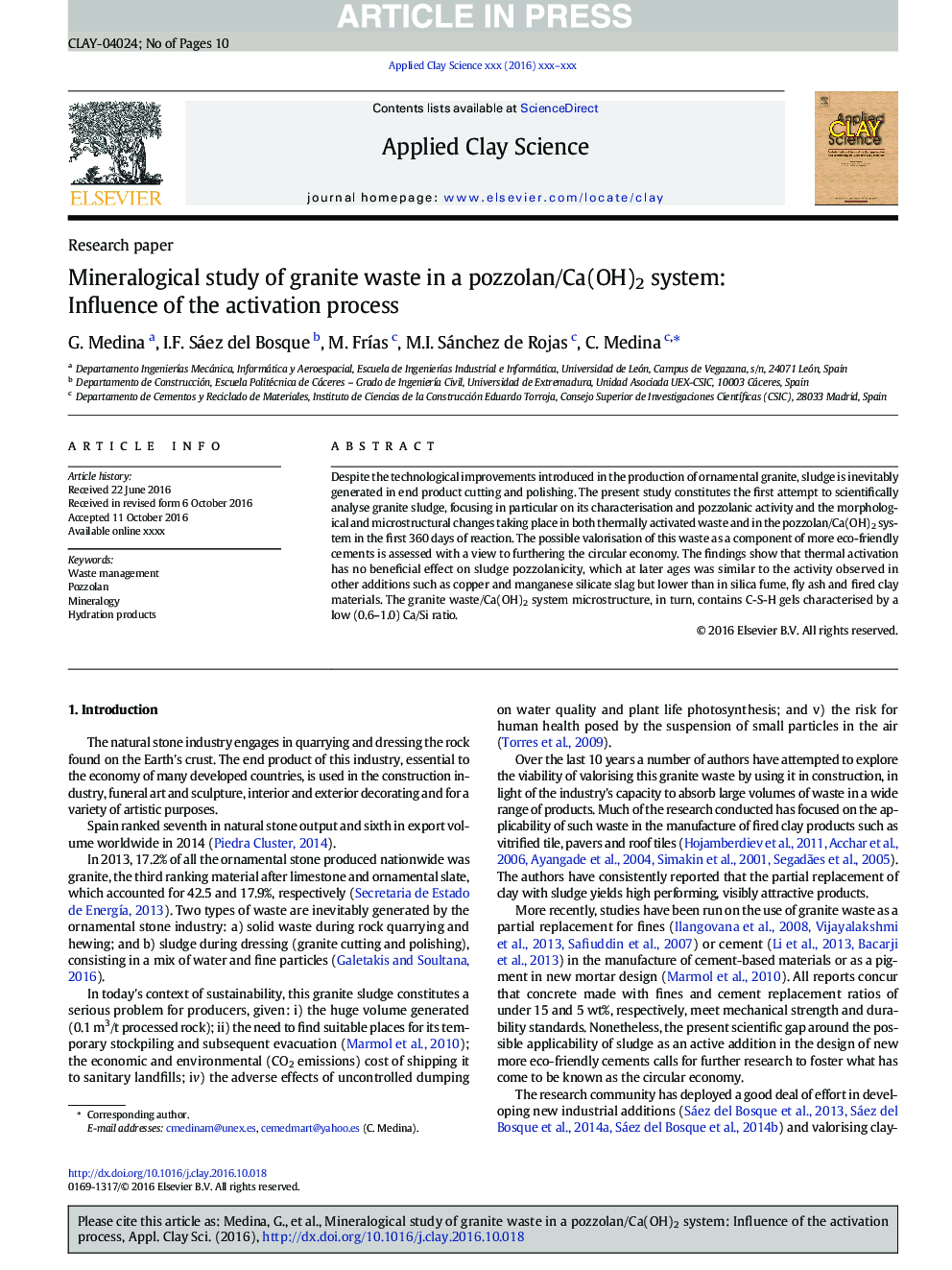| Article ID | Journal | Published Year | Pages | File Type |
|---|---|---|---|---|
| 5468987 | Applied Clay Science | 2017 | 10 Pages |
Abstract
Despite the technological improvements introduced in the production of ornamental granite, sludge is inevitably generated in end product cutting and polishing. The present study constitutes the first attempt to scientifically analyse granite sludge, focusing in particular on its characterisation and pozzolanic activity and the morphological and microstructural changes taking place in both thermally activated waste and in the pozzolan/Ca(OH)2 system in the first 360Â days of reaction. The possible valorisation of this waste as a component of more eco-friendly cements is assessed with a view to furthering the circular economy. The findings show that thermal activation has no beneficial effect on sludge pozzolanicity, which at later ages was similar to the activity observed in other additions such as copper and manganese silicate slag but lower than in silica fume, fly ash and fired clay materials. The granite waste/Ca(OH)2 system microstructure, in turn, contains C-S-H gels characterised by a low (0.6-1.0) Ca/Si ratio.
Related Topics
Physical Sciences and Engineering
Earth and Planetary Sciences
Geochemistry and Petrology
Authors
G. Medina, I.F. Sáez del Bosque, M. FrÃas, M.I. Sánchez de Rojas, C. Medina,
